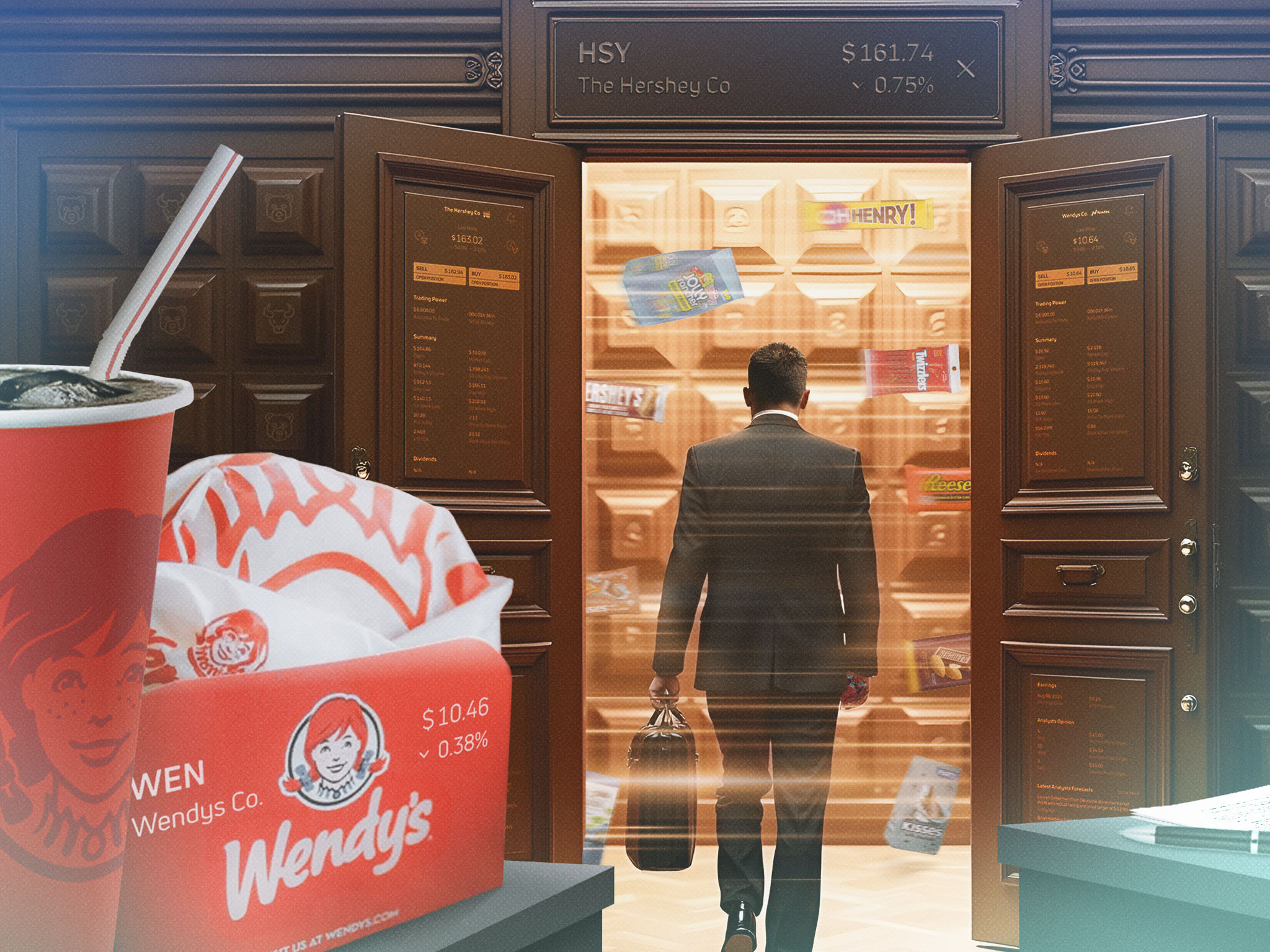Iconic chocolatier Hershey (NYSE: HSY) and fast-food giant Wendy’s (NASDAQ: WEN) made a one-way swap of chief executives last week, with Kirk Tanner leaving as CEO of Wendy’s to take the same position at Hershey.
Both companies face an uncertain future, as evidenced by the movement of their stock prices since the announcement. Hershey’s shares have slipped 6% since July 7, while Wendy’s shares have dipped 3%. Over the last 12 months, Hershey’s has dropped 13%, and Wendy’s has tumbled 34%.
Hershey’s has been hit hard by soaring cocoa prices that resulted from bad weather in West African growing regions. The commodity hit a record high in December. While it has slid 35% from that peak, it’s still up 150% from two years ago.
That, of course, along with general inflation, has forced Hershey to raise its own prices. Consumers are sensitive to price hikes after five years of high inflation – now 2.7%.
Hershey’s sinking sales
So it’s no wonder that Hershey’s sales sank 14% in the first quarter to $2.8 billion. Tariffs represent a headwind for the company too. Thus it forecasts earnings per share will tumble in the high 40s percent for the year as a whole. Hershey also suffers from the shift of consumer taste away from unhealthy snacks and suffers from the exploding use of anti-obesity medicines, such as Ozempic.
But the news isn’t all bad for the company. It projects revenue growth of 2% for all of 2025. While that’s not a big number, and much of it likely stems from inflation, it’s a lot better than a negative number.
Moreover, analysts are impressed with the performance of Hershey’s current CEO Michele Buck. “She has brought a prudent, strategic focus to the business over the past eight years, ramping up investments in Hershey’s core domestic brands while pulling back in its international arm,” writes Morningstar analyst Erin Lash.
And the new CEO Tanner brings useful experience to the table, having toiled more than 30 years at PepsiCo, in the beverage and snack divisions, she said.
But for Wendy’s, Tanner’s departure is nothing to celebrate, as he began his tenure only in February 2024. So the loss creates some instability, though the company will likely maintain its current strategy until it finds a permanent successor, says Morningstar analyst Kristoffer Inton.
Wendy’s: Same woes as Hershey’s
Like Hershey’s, Wendy’s has suffered from inflation that has shackled consumer spending, from the trend toward more healthy eating and the mushrooming use of GLP-1 anti-obesity drugs. Its sales stumbled 1% in the first quarter to $3.39 billion.
While that’s nothing to celebrate, it’s a much better number than Hershey’s. Wendy’s enjoyed an 8.9% spike in international sales during the quarter, as more than 60% of its restaurant openings came overseas. Wendy’s also faces less impact from tariffs than many other companies, because it sources most of its inputs locally.
Also on the upside, “the company’s recent innovations and collaborations have had some success despite a challenging backdrop,” wrote Morningstar analyst Kristoffer Inton. “Wendy’s has held share in the quick-service restaurant industry even as hamburger-focused traffic fared worse, [with revenue] down mid-single digits in the first quarter.
Among Wendy’s innovations: increased use of digital technology, including for ordering and data analytics; a renewed launch of its breakfast platform; and store redesigns. Collaborations include: a chicken sandwich with snack provider Takis and a Thin Mints Frosty with Girl Scouts of the USA.
So what can we take away from all this? Two storied food brands have both major strengths and major weaknesses. It’s difficult to predict where they will go from here.




Comments